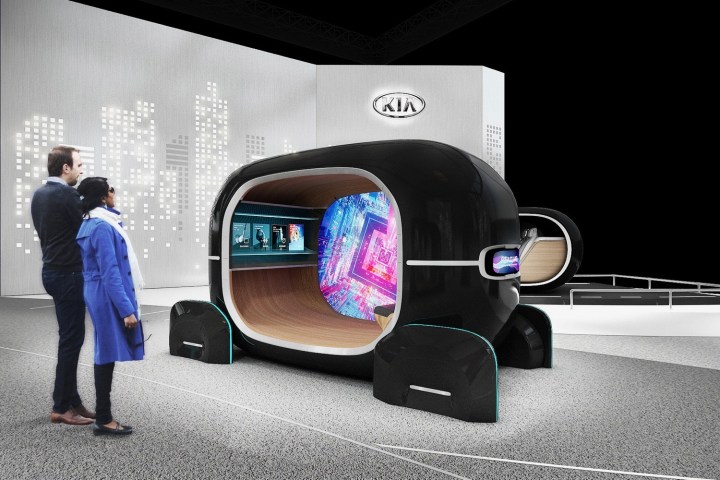
At CES 2019, Kia will look into the future, to a time when self-driving cars are the norm. When every person is a passenger, companies will need new ways to improve the experience, Kia reasons. The automaker believes artificial-intelligence technology that can recognize human emotions is the way to do that.
Kia is working with the Massachusetts Institute of Technology’s Media Lab’s Affective Computing group to develop a system called READ, short for Real-time Emotion Adaptive Driving. Kia calls the system a world first, claiming it can analyze a person’s emotional state through “bio-signal recognition technology” and artificial intelligence. The system can then alter certain aspects of the cabin to lift the occupant’s mood, according to Kia.
“We have developed the READ system to create an interactive future mobility in-cabin space by converging cutting-edge vehicle control technology and A.I.-based emotional intelligence,” Albert Biermann, head of research and development at Kia, said in a statement. “Consequently, the READ system will enable continuous communication between drivers and vehicles through the unspoken language of ’emotional feeling,’ thereby providing an optimized human senses-oriented space for drivers in real time.”
Biermann is the former BMW executive Kia hired to make its production cars more exciting to drive. But things like handling won’t matter much if autonomous cars proliferate. Even today, most drivers don’t get to fully exploit the capabilities of their cars. They spend lots of time sitting in traffic instead. That, along with the potential to reduce crashes, is a major impetus for self-driving cars.
Kia won’t demonstrate READ in a real car at CES. Instead, it will use a mockup of a car interior. Kia previously said it would begin testing autonomous cars in “smart cities” in 2021, but so far its efforts have been on a smaller scale than other companies. Parent Hyundai seems to be taking the lead on that.
If cars can reliably drive themselves, people will suddenly have more free time. As they sit in vehicles shuttling them from place to place, they will also be a captive audience. It’s possible that companies will not only use new technology to make the experience more pleasant, but to try to sell things to passengers. If Kia’s emotion-recognition tech ever goes mainstream, it could also provide a valuable source of data to marketers. Would you be comfortable with a company tracking your emotional responses?
Editors' Recommendations
- Kia reinvents the van with its electric Platform Beyond Vehicles
- Cruise autonomous vehicle drives over woman just after she was hit by another car
- Waymo taps the brakes on its autonomous-trucking project
- Autonomous cars confused by San Francisco’s fog
- Robotaxis have a passenger problem that no one thought of


